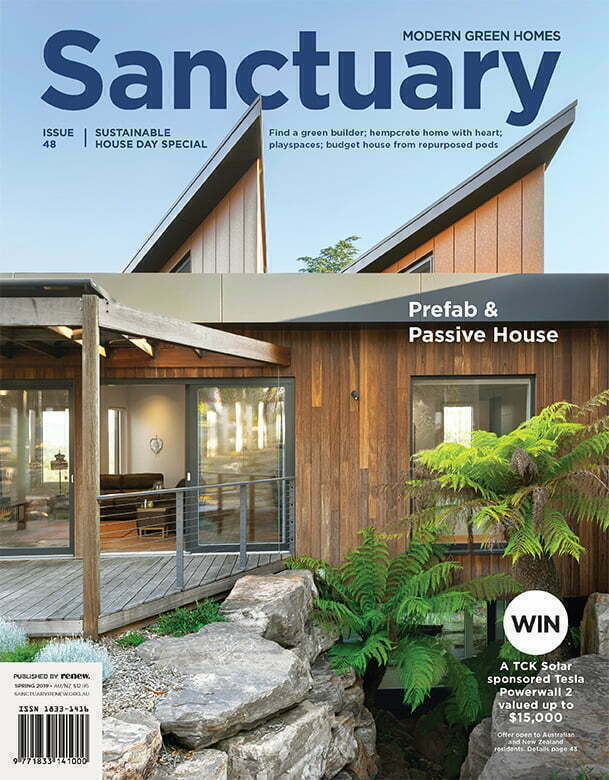Outside the box
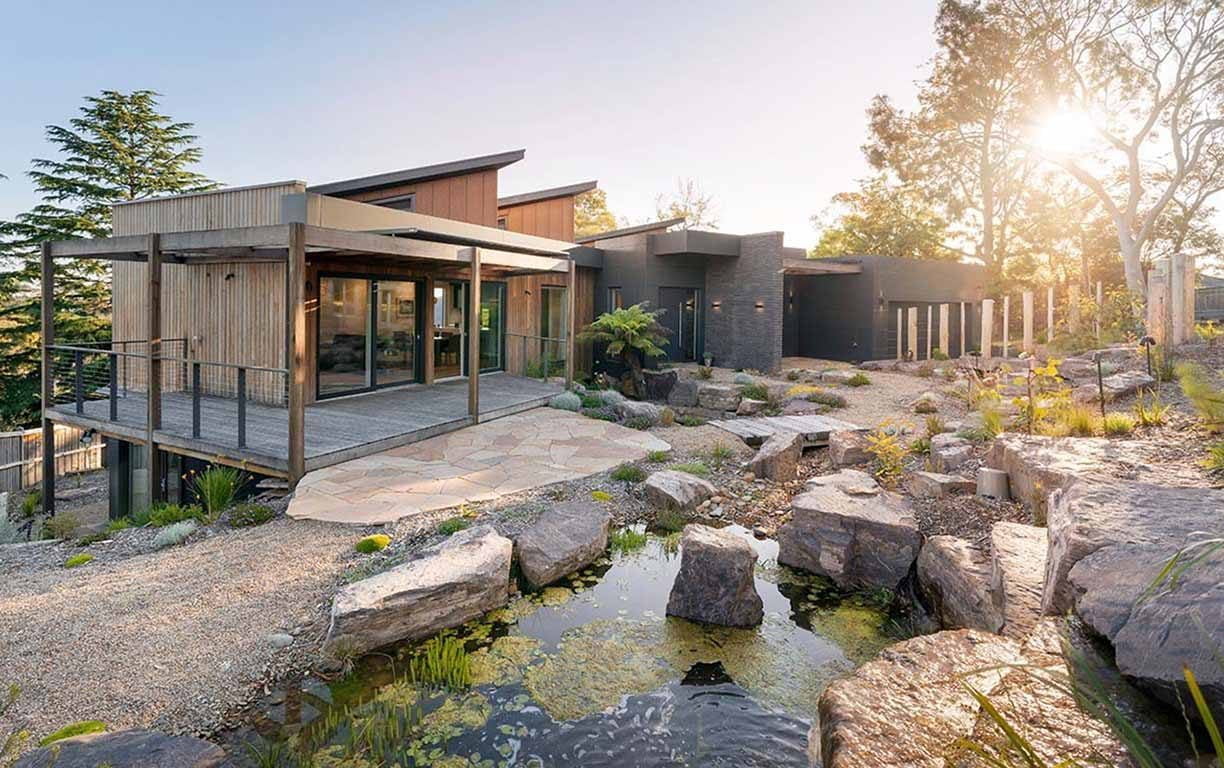
At a glance:
- Certified Passive House ensures comfort and low bills
- Prefabricated panel construction for thermal performance and reduced build time
- Living areas and main bedroom on one level for ageing in place
- Sawtooth shape captures sunlight and views
A Melbourne home pushes the boundaries of Passive House design, employing prefab panel construction to help break away from the typical boxy form to capture views and sunlight on a tricky site.
Bruce and Jenny Saward engaged Maxa Design for their build in Melbourne’s east because they wanted a sustainable home. As the project evolved, however, they got more than they bargained for, with their new home achieving Passive House certification. Lead architect Sven Maxa had recently become a certified Passive House designer, and undertook a cost analysis for the couple of building a passive solar house using standard construction methods, versus the same design as a Passive House with the necessary material substitutions. “It was basically a cost-equal decision, with the benefit of a higher-performing outcome, so the Sawards said let’s go for it,” says Sven. Thinking outside the typical box of Passive House design, the Maxa Design team created a thermally comfortable home with a sawtooth roof and zigzag facade to take advantage of sunlight and views.

Bruce and Jenny were attracted to the site in Heathmont for the view across the hills and treetops to the Dandenong Ranges and for its potential for a north-facing home. They wanted a light and bright house with the living areas and main bedroom on one level for ageing in place, and they asked Maxa Design to assess the property before they purchased it to ensure they could achieve their desired home. “It was an interesting block of land with good opportunities but certainly some challenges,” says Sven. The site sloped steeply to the south-east, with views to the east and south-east and tall trees partially blocking the north-west sun. “Something unique would be needed to resolve the site’s complexities, but they bought the block with the confidence we could design a home that would work for them.”
The house is aligned with the site’s contours for a more cost-efficient solution, skewed south-east on the site to negotiate the fall of the land. Angling the house also provides views of the Dandenongs and brings northern light into the kitchen, dining and living area, and the lounge at the front of the house. The outdoor entertaining area is oriented to the north where the deck and landscaping – with native plantings, reticulated billabong and trickling stream – are visible to passers-by through the timber-post fence. “We didn’t want a solid fence, because we wanted to feel connected to the street,” says Jenny.
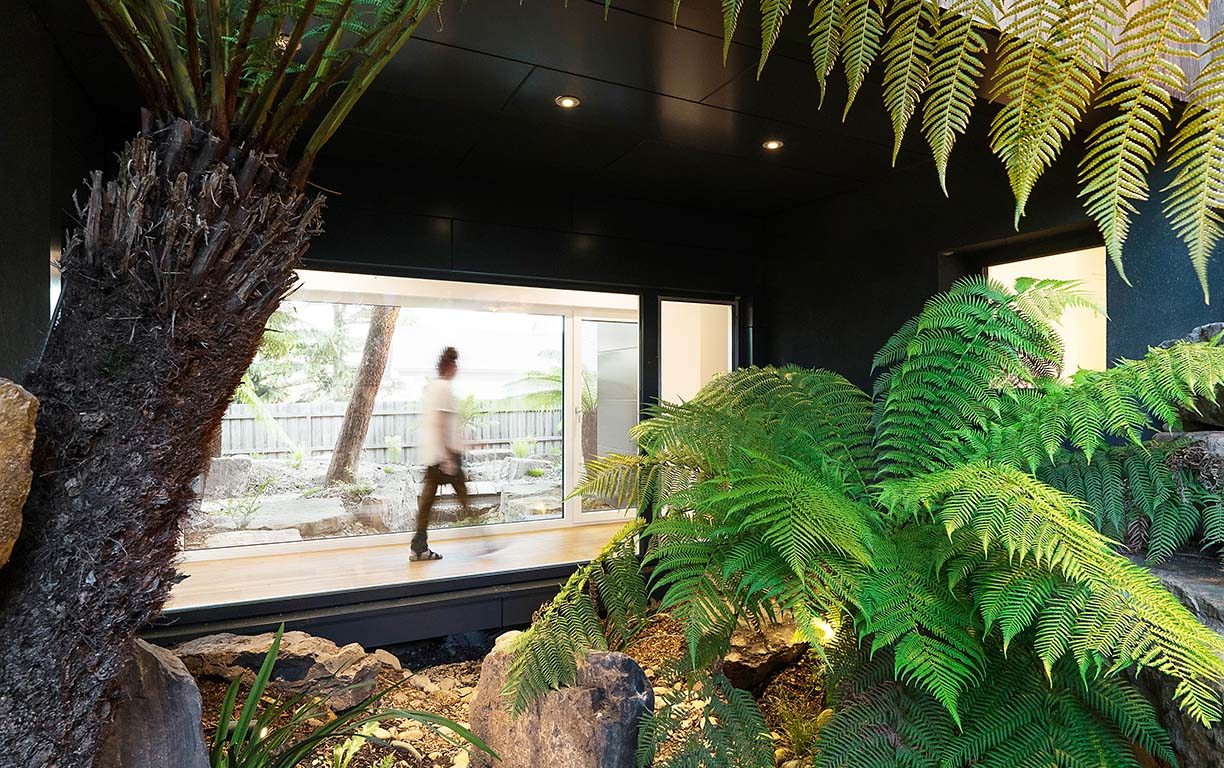
All living areas and the main bedroom suite and study are at street level for long-term useability into the couple’s retirement years (and to meet the Liveable Home design guidelines), and stairs provide access to the lower level where there are two bedrooms for visitors, including interstate family. A glazed bridge that crosses the stream leads to a self-contained studio which also has its own separate entry and a private patio; this is intended for longer-term visitors, tenants or even a carer in the future if it ever becomes necessary.
The architecture of the finished home is distinctive. “Certified Passive Houses do not normally look like this; they are typically very monolithic or boxlike in form,” says Sven. “This home breaks down the common misconception that a Passive House has to be mundane architecture.” Four triangular sections peel up from the roof, creating lofty vaulted ceilings inside and featuring highlight windows for north-east sun and to purge summer heat. The angular ‘extrusions’ continue along the south-east wall, with a sawtooth profile housing windows to frame the outlook. Sven explains that as each corner or angle in a Passive House must be treated as a thermal bridge and its impact on the thermal envelope assessed, these sawtooth details increased the complexity of resolving the airtight design and the required thermal resistance to achieve certification: “It’s certainly easier to certify a rectangular box!” To compensate, extra attention was paid to the insulation levels of the overall building fabric, including high-performance triple-glazed windows.
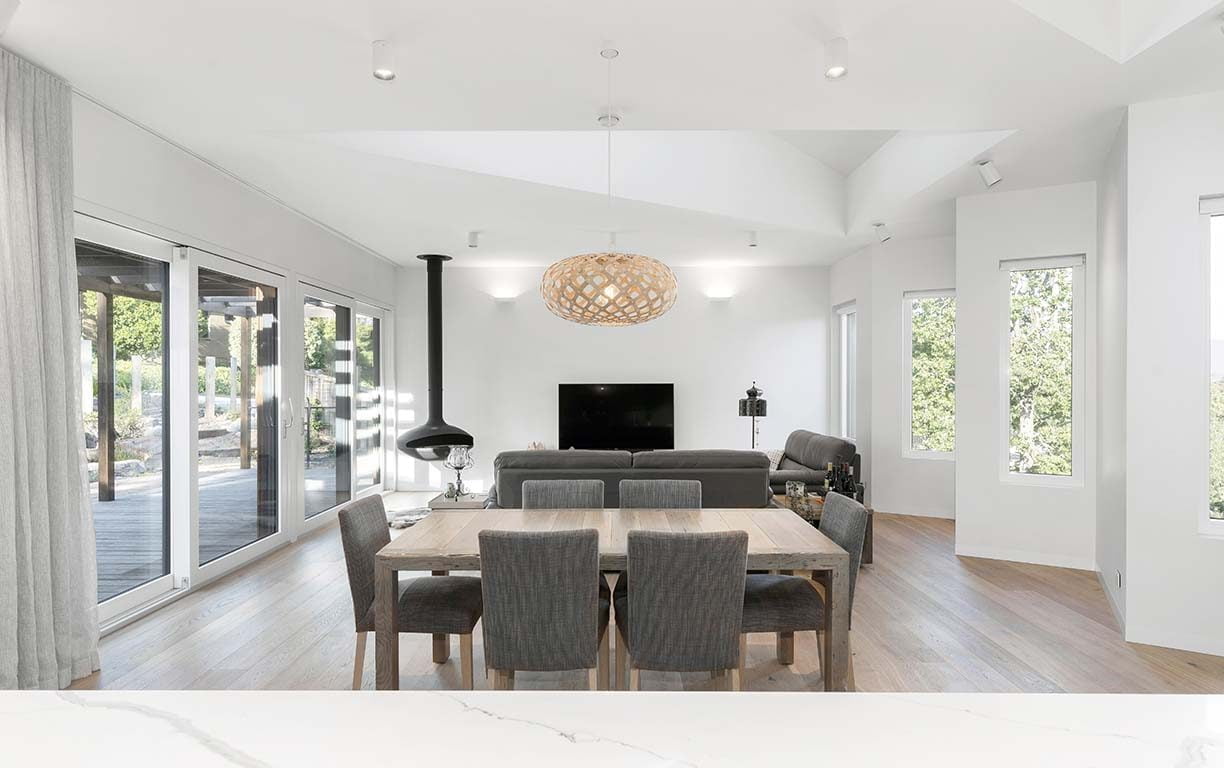
Another factor setting this house apart is its use of prefabricated panel construction. Melbourne-based Carbonlite built the house using its Panellite construction system for walls, floor and roof. “Passive House designers are starting to lean towards structural insulated panels (SIPs) because their precision fabrication makes it easier to achieve airtightness and continuous insulation around a building,” says Sven, noting that they also offer quicker onsite build times. “We chose to work with Carbonlite because their product is specifically designed for use in Passive Houses and has been certified by the governing institute in Germany; this means it’s been assessed for a range of factors including thermal performance and vapour permeability.” He explains that this simplified the design process and certification of the Sawards’ home.
Elsewhere, Maxa Design specified natural materials wherever possible. Spotted gum timber and zinc panelling were used for cladding, and the decking and pergola are also spotted gum. The interior is white, dark grey and timber, and a tiled wall alongside the stairwell provides a beautifully textured feature. Collected rainwater is plumbed throughout the house with mains backup for extended dry periods.
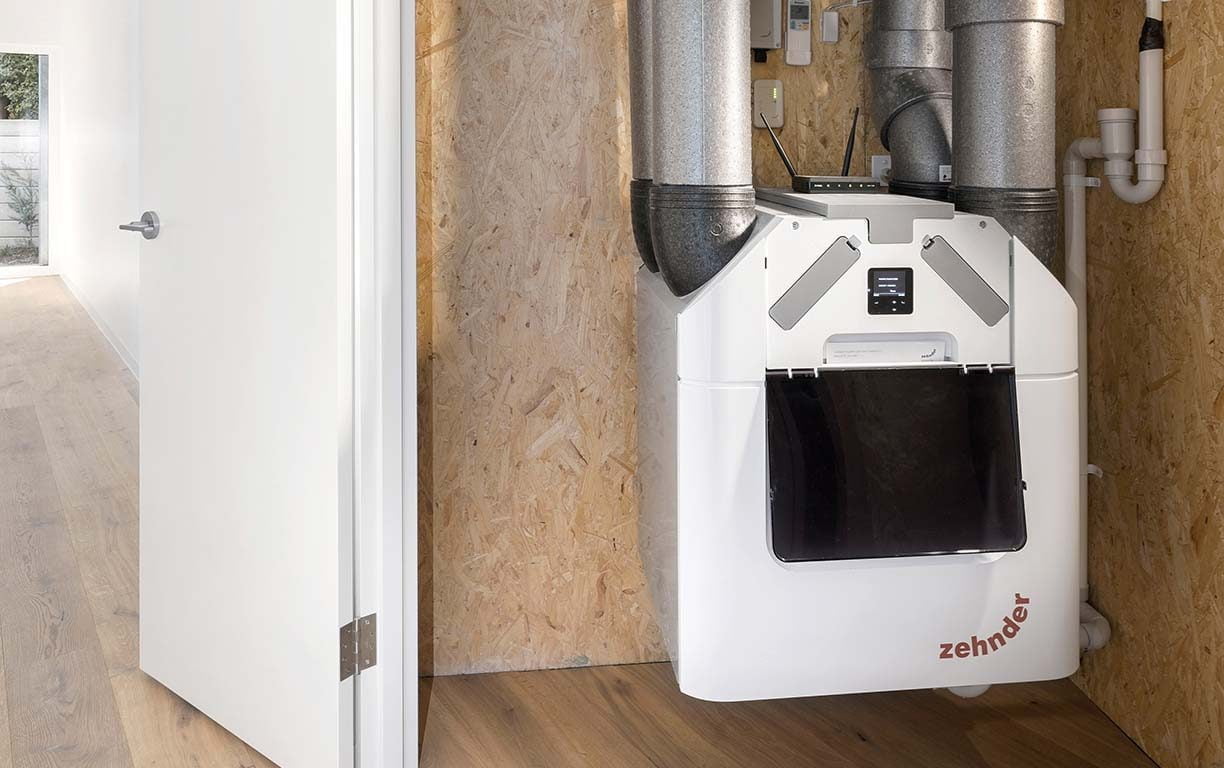
It is an all-electric home. Heating and cooling is via a 3kW split system integrated into the heat recovery ventilation system, which greatly reduces the size of the system required for a house of this size, and ensures even distribution. It was something of a trial system at the time, and the system designer emphasises that integrated air conditioning units like this are really only suitable for Passive Houses due to their very low heating and cooling requirements.
In fact, the heating and cooling demands of the Sawards’ house (respectively 12kWh/m2a and 11kWh/m2a: kilowatt-hours per square metre of floor area, per year) more than meet Passive House requirements, and Jenny describes their home as being very comfortable and peaceful. “It is quite lovely to have a home that has a consistent temperature,” she says.
To see the full house plans and specs, buy an issue of Sanctuary 48 here.
Further reading:
 House profiles
House profiles
Airy flair
A minimalist renovation to their 1970s Queenslander unlocked natural ventilation, energy efficiency and more useable space for this Cairns family.
Read more House profiles
House profiles
Pretty in pink
This subtropical home challenges the status quo – and not just with its colour scheme.
Read more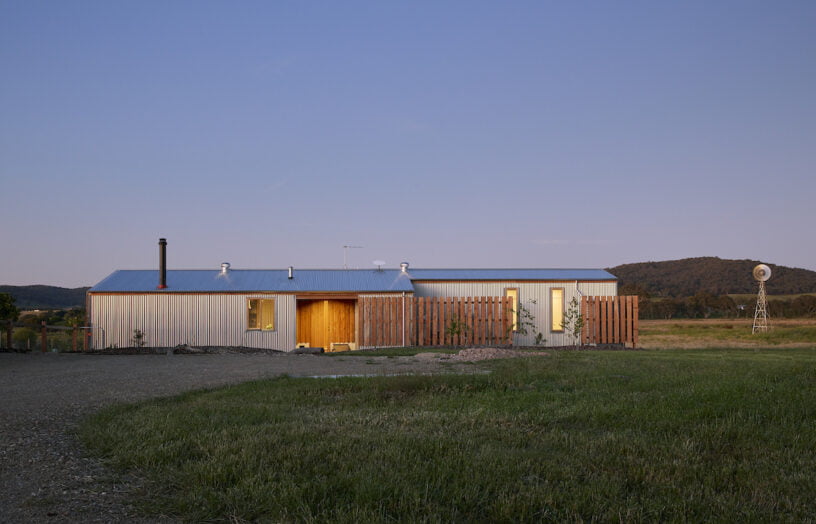 House profiles
House profiles
Mini homestead
A small off-grid home in rural Victoria, built to a simple floor plan.
Read more

